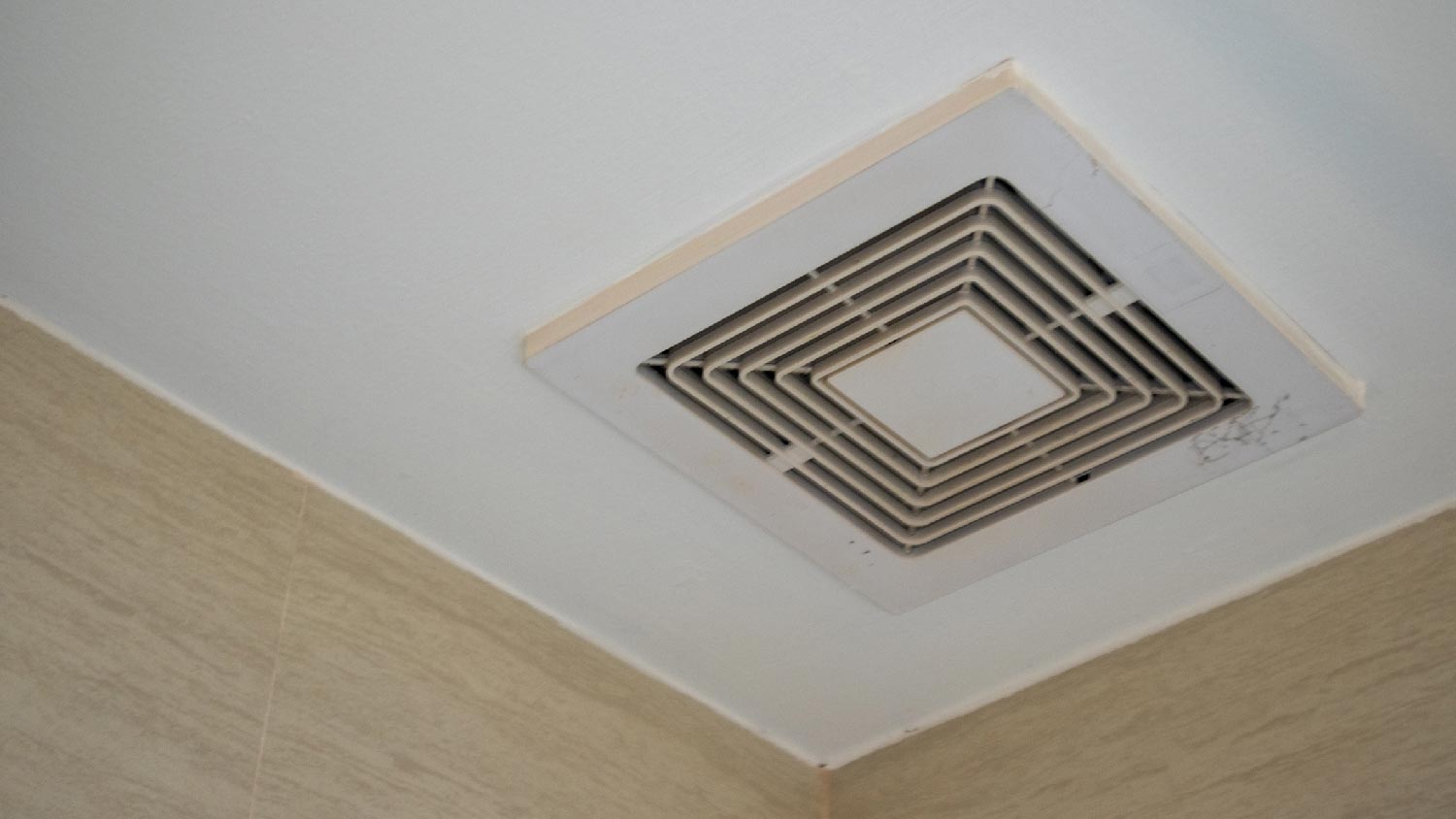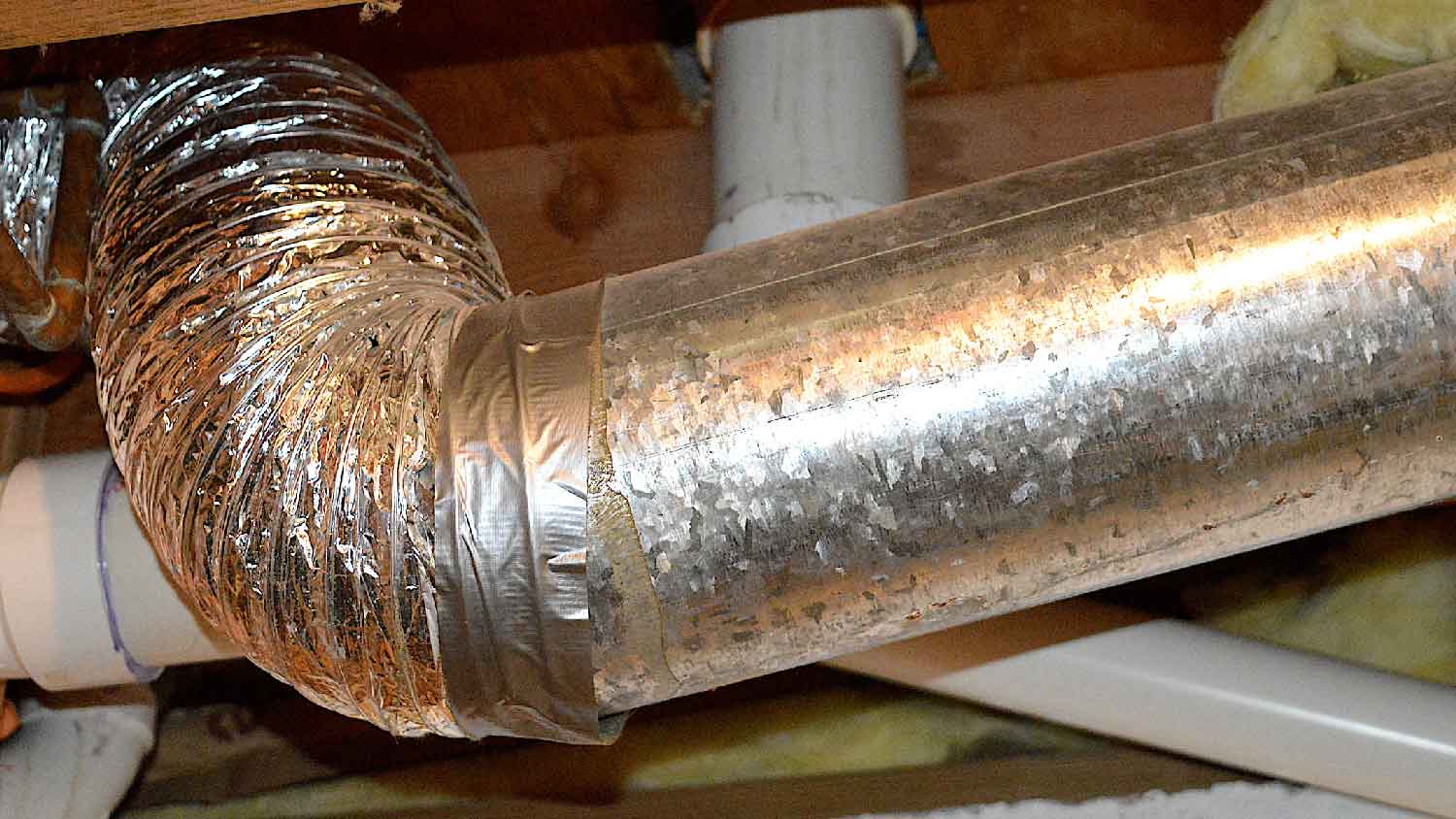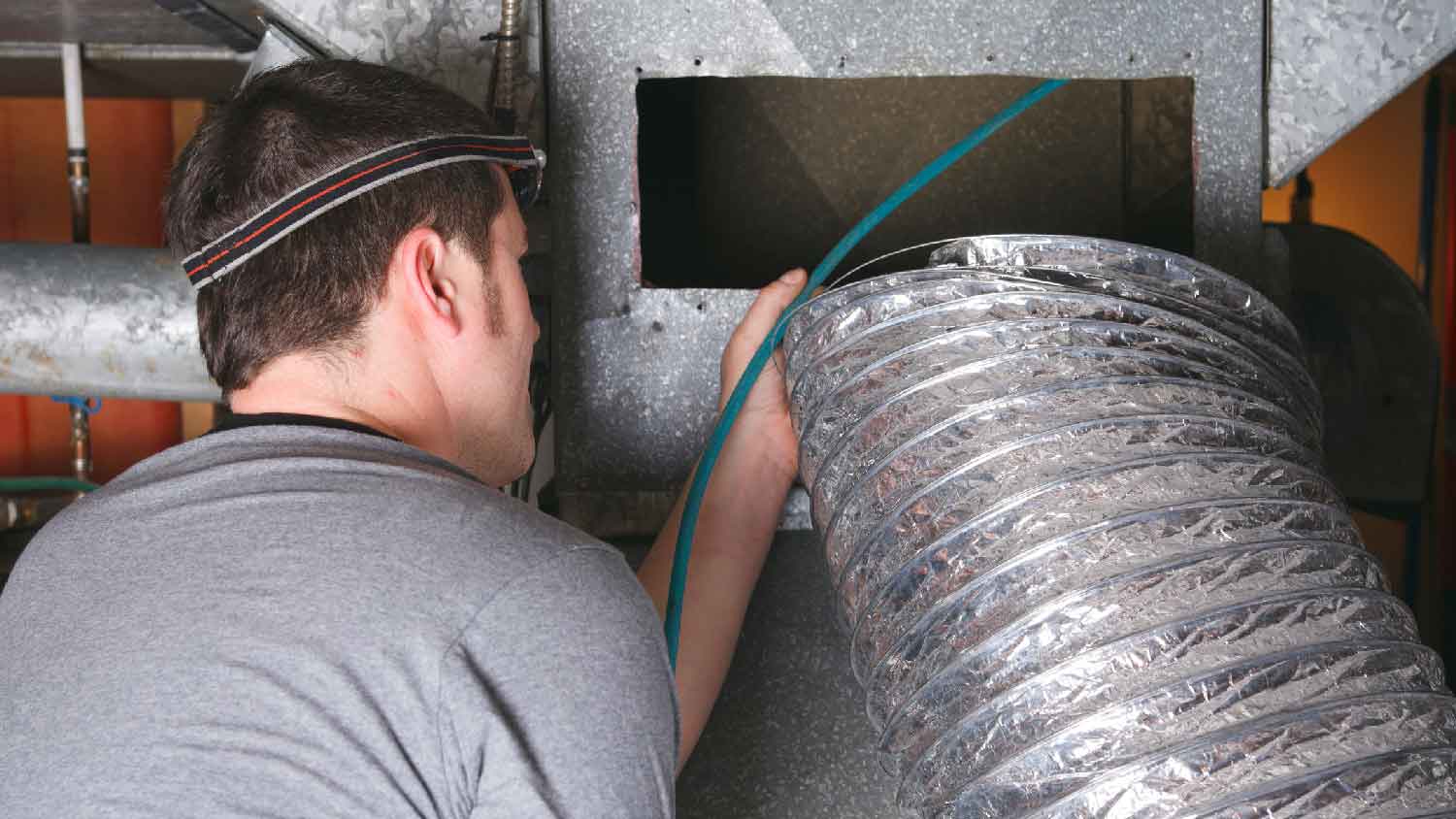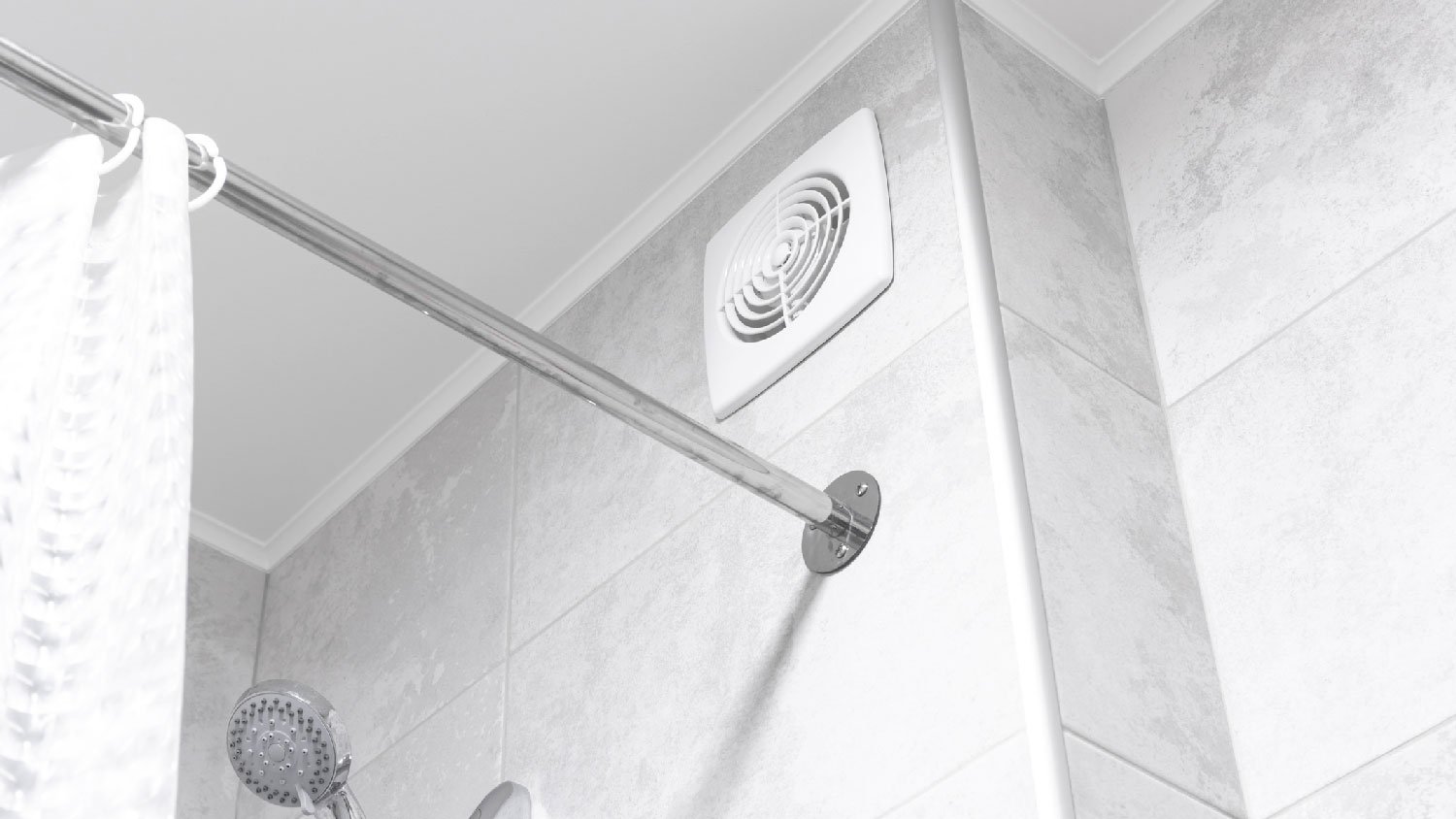6 Bathroom Exhaust Fan Venting Options to Consider
Vented bathroom fans keep moisture and odors at bay


Bathroom fans remove moisture from the room after showers and baths and clear the occasional unpleasant odor. You don’t want to install a fan just anywhere, though. Instead, it's best to optimize the location for proper venting. The six best bathroom exhaust fan venting options are through the roof, exterior wall, soffit, HVAC ductwork, attic, or recirculating through a filter and back into the bathroom. Here’s what to know about each one.
1. Roof

The most popular venting option for a bathroom exhaust fan is a pipe extending vertically through the roof. This choice only works on home designs that allow a straight vertical pipe with no bends. It's the most efficient means of pulling moisture out with the least chance of moisture re-entering the home.
You need extremely tight seals where the vent exits the roof to prevent leaks from rain. However, a professional can do this installation easily and correctly for you to eliminate the chance of leaks.
| Pros | Cons |
|---|---|
| Best overall option | Must cut into roof |
| Most direct route | Tough DIY install |
| Maximum airflow | Needs tight seals |
Best for: Those who want the most effective bathroom exhaust fan venting option
2. Exterior Wall

If your bathroom has an exterior wall, going directly through the wall with the vent may be the best option because it’s the shortest route. You will have to cut into the siding on the side of the house, which can be tricky. Some people may not like the look of a vent on the home’s side, either.
Never install the bathroom exhaust vent into the garage, because the fan will struggle to pull in fresh air. You need to vent outdoors with this solution.
| Pros | Cons |
|---|---|
| Often shortest route | Needs exterior wall |
| Wall-hung fan option | Puts hole in siding |
| Ideal for first floor | Don’t vent in garage |
Best for: First-floor or basement bathrooms in multi-story homes
3. Soffit
If you cannot go through the roof or wall, you can vent the fan from the bathroom through the soffit under the eaves. Going under the soffit may be the most direct route if you are venting a second-story bathroom. Some people like hiding the vent under the soffit, rather than having it visible on the roof or exterior wall.
You must be careful that the bathroom exhaust fan vent is not near a soffit vent. The humidity that’s leaving the bathroom could come right back into the home through the soffit vents that ventilate the attic. For this reason, some local building codes do not allow venting through the soffit.
| Pros | Cons |
|---|---|
| Hidden under eaves | Pipe must bend |
| Won’t cut into roof | May not fit codes |
| May be a shorter route | Avoid soffit vents |
Best for: Second-story bathroom with an exterior wall
4. HVAC Ductwork

If you have a bathroom in the interior of the home that has no easy path for venting the fan outdoors, you could tie the fan exhaust into your home’s HVAC ductwork.
One drawback to this design is that the moisture from the bathroom ends up in the ductwork, so some of it stays in your home, although it’s spread throughout the home. If you don’t have easy access to your ducts near the bathroom, you may have to do quite a bit of tearing into walls or ceilings to make the connection.
| Pros | Cons |
|---|---|
| Fits interior rooms | Not as efficient |
| No exterior holes | Humidity not vented |
| Uses in-place ducts | Must cut into ducts |
Best for: First-floor or basement bathrooms in the interior of the home
5. Attic

If you have no other options for ventilating your bathroom exhaust fan, you can likely put the exhaust into the attic. This option may work if you have a large attic with a significant flow of air through it.
However, because the moisture from the bathroom remains trapped in the attic, rather than exiting the home, this option is a last resort. You could end up with high humidity inside the home from this excess moisture, leading to increased AC bills. Some local building codes prohibit venting your bathroom fan into the attic.
| Pros | Cons |
|---|---|
| Easy to install | Traps the moisture |
| No hole in roof | Higher power bills |
| Uses attic airflow | Susceptible to mold |
Best for: Homes with a large, well-ventilated attic and no other venting options
6. Recirculating

A recirculating bathroom fan is worth considering when you simply have no other venting option. This fan uses a charcoal filter to pull odors and some humidity from the air before recirculating the air back into the bathroom. You must replace the filter every few months to ensure proper operation.
Ultimately, it doesn’t remove moisture as efficiently as other venting options. Additionally, some designs of this large type of fan hang noticeably downward from the ceiling.
| Pros | Cons |
|---|---|
| No vent pipe needed | Moisture remains |
| Uses charcoal filter | Must change filter |
| Removes odors well | Large profile |
Best for: Homes with no other venting options
How to Install Bathroom Exhaust Fan Vents
Installing a bathroom exhaust fan yourself—and properly venting it—is a difficult DIY job.
You'll start by planning the route for the exhaust. Where do bathroom vents go to make venting easier? Look for a spot that gives you a clear vertical path to the roof.
You also need to figure out how to choose a bathroom fan. The fan you select will depend largely on the bathroom exhaust fan venting options and the airflow level you need. A longer vent pipe requires a more powerful fan.
If you don't feel comfortable climbing on the roof, cutting through the ceiling and roof deck, and wiring the fan, consider hiring a pro for the work. In addition to finding the perfect spot for the fan, the pro can suggest the right type of fan.
A local bathroom fan installation pro is the best person to hire to install a bathroom exhaust fan. These techs can do the entire job for you, including cutting through the roof deck, connecting the fan to power, and avoiding leaks.
Most people will pay about $250 to $550 on the cost to install a bathroom fan, but some installations could cost as much as $900. Keep in mind that you should also budget for ongoing maintenance to keep the air flowing well. You can reach out to an air duct cleaning company near you to keep your bathroom exhaust fans running smoothly.















